Sep 13, 2017 | Senza categoria
https://vimeo.com/233854802 News items Breaking Rays: A worldwide network of communicators going back to school… together. India: The Rainbow Kids: One woman’s quest to offer opportunity where there was none. World camps to become global citizens: Youth giving their time for others. Philippines: Serafin’s dream: A dream changes course and a peacemaker is born. Nigeria – Mariapolis in Lagos and Abuja: Forgiveness and dialogue, true arms for unity in the country. Italy: Family in the digital age: Coping with technology in the house. Roberto Cipollone – Ciro, craftsman and artist: Breathing life, meaning and beauty into discarded items.
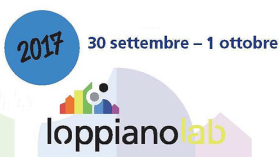
Sep 8, 2017 | Focolare Worldwide, Senza categoria
 The national workshop on economy, culture, communication, education and innovation is annually promoted by New City, Polo Lionello Bonfanti, Sophia University Institute, and the town of Loppiano which is hosting the event. In response to Pope Francis’s invitation, the aim of the convention is to offer the occasion for dialogue and proposals on the foremost issues in our country: from immigration to work, poverty to social inclusion, and battles against corruption to commitment for the common good, family, youth, education and many more. The convention will expound receptiveness to counter exclusion and the quest for private interest, promote new civic virtues to find solutions to the contradictions of our time, and act on the unjust structures that produce – precisely – “victims and bandits.” LoppianoLab is thus a cultural laboratory where the seeds of a new mentality will subsequently be sown, in the conviction that the pursuit of profit cannot be the compass for every human activity. The event is open to all those who question themselves on these themes and wish to become “artisans of change.” For information write to: loppianolab.accoglienza@loppiano.it
The national workshop on economy, culture, communication, education and innovation is annually promoted by New City, Polo Lionello Bonfanti, Sophia University Institute, and the town of Loppiano which is hosting the event. In response to Pope Francis’s invitation, the aim of the convention is to offer the occasion for dialogue and proposals on the foremost issues in our country: from immigration to work, poverty to social inclusion, and battles against corruption to commitment for the common good, family, youth, education and many more. The convention will expound receptiveness to counter exclusion and the quest for private interest, promote new civic virtues to find solutions to the contradictions of our time, and act on the unjust structures that produce – precisely – “victims and bandits.” LoppianoLab is thus a cultural laboratory where the seeds of a new mentality will subsequently be sown, in the conviction that the pursuit of profit cannot be the compass for every human activity. The event is open to all those who question themselves on these themes and wish to become “artisans of change.” For information write to: loppianolab.accoglienza@loppiano.it
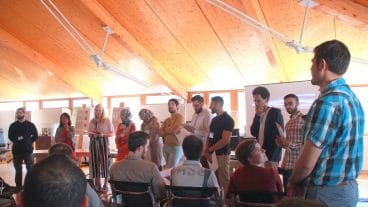
Sep 6, 2017 | Senza categoria
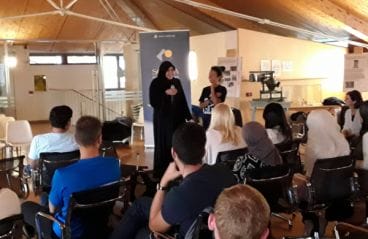 A summer school in the Primiero Valleys (Italy) is not a novelty. Some had taken place in the past years, thanks to the initiative of the Sophia University Institute. This year’s summer school held from 25 – 30 August had a precise interreligious profile, with the presence of Shiite and Christian students. Apart from the initiative’s success, this was not an occasional event, but a 20-year friendship journey undertaken by Shiite Muslims and Catholics, within the context of the Focolare Movement’s spirituality of communion. During the second half of the 1990s, Professor Mohammad Shomali with his wife, Mahnaz, also an academic from Qom (the holy city of Shi’a Islam in Iran), were both studying in England. Along with their studies they had hoped to find a way of establishing a relationship with dynamic Christian communities. Already at that time both had felt the calling to interreligious commitment. It was in this context that the two young academics met the Focolare Movement, and a deep spiritual friendship was established, based on the central point of love as a path to reach God and the brothers and sisters around us.
A summer school in the Primiero Valleys (Italy) is not a novelty. Some had taken place in the past years, thanks to the initiative of the Sophia University Institute. This year’s summer school held from 25 – 30 August had a precise interreligious profile, with the presence of Shiite and Christian students. Apart from the initiative’s success, this was not an occasional event, but a 20-year friendship journey undertaken by Shiite Muslims and Catholics, within the context of the Focolare Movement’s spirituality of communion. During the second half of the 1990s, Professor Mohammad Shomali with his wife, Mahnaz, also an academic from Qom (the holy city of Shi’a Islam in Iran), were both studying in England. Along with their studies they had hoped to find a way of establishing a relationship with dynamic Christian communities. Already at that time both had felt the calling to interreligious commitment. It was in this context that the two young academics met the Focolare Movement, and a deep spiritual friendship was established, based on the central point of love as a path to reach God and the brothers and sisters around us. 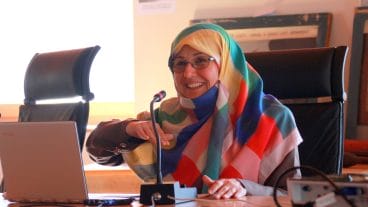 Besides a profound experience with the Benedictine community of the monastery of Ampleforth, the Shomalis had deepened their knowledge of the spirituality of communion and had also met other Christians and Muslims, on the occasion of international meetings held in Rome and in the town of Loppiano. After their return to Qom the relationships with the Focolare continued, and starting 2010 were enriched by academic values. In fact, to enhance a true bond between Shiite students of Qom and the Catholic Church, the Shomalis organised various group journeys to Italy, where they held meetings with the Pontifical Council for Interreligious Dialogue, the St. Anselm University, PISAI (Pontifical Institute for Arabic and Islamic Studies), and the Focolare Movement. In 2014, a delegation of the Movement’s Interreligious Dialogue Centre spent a week in Qom to meet various academic and religious groups and establish relationships of trust and communion at both concrete and intellectual levels, going deeper into the religious Christian heritage and highlighting common values and possibilities to set up paths of dialogue.
Besides a profound experience with the Benedictine community of the monastery of Ampleforth, the Shomalis had deepened their knowledge of the spirituality of communion and had also met other Christians and Muslims, on the occasion of international meetings held in Rome and in the town of Loppiano. After their return to Qom the relationships with the Focolare continued, and starting 2010 were enriched by academic values. In fact, to enhance a true bond between Shiite students of Qom and the Catholic Church, the Shomalis organised various group journeys to Italy, where they held meetings with the Pontifical Council for Interreligious Dialogue, the St. Anselm University, PISAI (Pontifical Institute for Arabic and Islamic Studies), and the Focolare Movement. In 2014, a delegation of the Movement’s Interreligious Dialogue Centre spent a week in Qom to meet various academic and religious groups and establish relationships of trust and communion at both concrete and intellectual levels, going deeper into the religious Christian heritage and highlighting common values and possibilities to set up paths of dialogue.  It was in this context that a bond with the Sophia University Institute was established, especially between the Rector, Mons. Piero Coda, and Professor Shomali. With subsequent encounters and lessons offered by the professor to the students of the Institute and the inhabitants of Loppiano, and in collaboration with Rita Moussalem and Roberto Catalano, Co-Directors of the Focolare’s Centre for Interreligious Dialogue, Coda and Shomali had developed the idea of creating a common academic research project with concrete works, which was named Wings of Unity. The core of this initiative is based on the quest for unity of God and unity in God and aims to focus on the perception of God in the two traditions, and in this light, on the possibility of building a true spirit of brotherhood. The finality is to create occasions for reflection in communion between Shiite Muslims and Christians and favouring the education of young generations in interreligious dialogue. As Prof. Shomali himself summarised, in these years they have gone beyond dialogue, and have attained the same way of thinking.
It was in this context that a bond with the Sophia University Institute was established, especially between the Rector, Mons. Piero Coda, and Professor Shomali. With subsequent encounters and lessons offered by the professor to the students of the Institute and the inhabitants of Loppiano, and in collaboration with Rita Moussalem and Roberto Catalano, Co-Directors of the Focolare’s Centre for Interreligious Dialogue, Coda and Shomali had developed the idea of creating a common academic research project with concrete works, which was named Wings of Unity. The core of this initiative is based on the quest for unity of God and unity in God and aims to focus on the perception of God in the two traditions, and in this light, on the possibility of building a true spirit of brotherhood. The finality is to create occasions for reflection in communion between Shiite Muslims and Christians and favouring the education of young generations in interreligious dialogue. As Prof. Shomali himself summarised, in these years they have gone beyond dialogue, and have attained the same way of thinking.
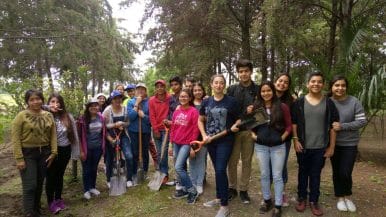
Sep 1, 2017 | Focolare Worldwide, Senza categoria
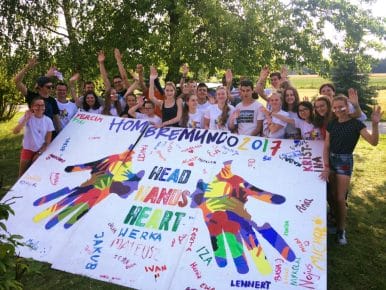 From Central and South America, to Europe, Afica and Middle East, fifty laboratories for forming people who are open, inclusive, world citizens who wish to offer the wealth of their own cultures while being open to that of others. Every three years the Focolare’s Teens for Unity hold a series of international workshops in which they can be formed in a culture of fraternity as the antidote to division, intolerance and hate. Each workshop had two phases. The first phase consisted in learning to know and respect the other’s culture as one’s own. The second, to take concrete action, especially in the most needy peripheries with the most disadvantaged people: the homeless, orphans, immigrants and Rom. In Lithuania, the teenagers of the workshops – which included groups from Switzerland – visited a hospital for the disabled and mentally ill where they managed to engage a girl who was usually unresponsive to any kind of stimulation. In the small European state of Škofia Loka, Slovenia, their goal was to engage the homeless. In Bratisslava, German and Slovak teenagers volunteered to clean the shores of the Danube, where they collected six tons of trash. There were also concerts, flashmobs, and folk festivals on several public squares of Eastern Europe which caught the curiosity and intererst of the media. Several teenagers were interviewed on national television at Mariapolis Faro. The Mariapolis in Croatia was turned into an international microcosm with 280 teenagers from 22 nations, and twelve translations for teenagers from such places as Palestine, Israel, Lebanon, Jordan, Syria and Venezuela. “When I talked with the guys from Venezuela,” says a girl from the Holy Land, “I found out that there are problems in every country. We’re at war, but at least we have food to eat. In Venezuela, they don’t even have any. So, I brought a basket and suggested that we put what we had in common.” Another teenager: “From now on, when someone asks me how many brothers and sisters I have, I’ll say 280!” “A group of girls arriving from the United State lost their luggage at the airport. The luggage was located and returned to them a few days later. In the meantime – used as they were to always having everything they needed – they experienced what it’s like to depend on the love (and clothing) of others. In Serbia, the workshop opened in Cardak, an hour drive from Belgrade. The teenagers were hosted at a state institute, in a wooded area where hundreds of refugees had recently passed from the Balkans: a simbol of beauty and suffering in the tormented march toward the unity of peoples, Churches and religions. They also experienced the diversity of religions – many of them Christian and Muslim – and of different traditions – among them Catholic, Orthodox, Lutheran, Evangelical and Anglican. Some didn’t confess any particular creed, but everyone felt perfectly integrated.
From Central and South America, to Europe, Afica and Middle East, fifty laboratories for forming people who are open, inclusive, world citizens who wish to offer the wealth of their own cultures while being open to that of others. Every three years the Focolare’s Teens for Unity hold a series of international workshops in which they can be formed in a culture of fraternity as the antidote to division, intolerance and hate. Each workshop had two phases. The first phase consisted in learning to know and respect the other’s culture as one’s own. The second, to take concrete action, especially in the most needy peripheries with the most disadvantaged people: the homeless, orphans, immigrants and Rom. In Lithuania, the teenagers of the workshops – which included groups from Switzerland – visited a hospital for the disabled and mentally ill where they managed to engage a girl who was usually unresponsive to any kind of stimulation. In the small European state of Škofia Loka, Slovenia, their goal was to engage the homeless. In Bratisslava, German and Slovak teenagers volunteered to clean the shores of the Danube, where they collected six tons of trash. There were also concerts, flashmobs, and folk festivals on several public squares of Eastern Europe which caught the curiosity and intererst of the media. Several teenagers were interviewed on national television at Mariapolis Faro. The Mariapolis in Croatia was turned into an international microcosm with 280 teenagers from 22 nations, and twelve translations for teenagers from such places as Palestine, Israel, Lebanon, Jordan, Syria and Venezuela. “When I talked with the guys from Venezuela,” says a girl from the Holy Land, “I found out that there are problems in every country. We’re at war, but at least we have food to eat. In Venezuela, they don’t even have any. So, I brought a basket and suggested that we put what we had in common.” Another teenager: “From now on, when someone asks me how many brothers and sisters I have, I’ll say 280!” “A group of girls arriving from the United State lost their luggage at the airport. The luggage was located and returned to them a few days later. In the meantime – used as they were to always having everything they needed – they experienced what it’s like to depend on the love (and clothing) of others. In Serbia, the workshop opened in Cardak, an hour drive from Belgrade. The teenagers were hosted at a state institute, in a wooded area where hundreds of refugees had recently passed from the Balkans: a simbol of beauty and suffering in the tormented march toward the unity of peoples, Churches and religions. They also experienced the diversity of religions – many of them Christian and Muslim – and of different traditions – among them Catholic, Orthodox, Lutheran, Evangelical and Anglican. Some didn’t confess any particular creed, but everyone felt perfectly integrated.  At Paztún, in the Maya Kapchikel region of Guatamala, the workshop from Central America gathered 160 teenagers from Panama, Costa Rica, Honduras, El Salvador and Guatamala, along with some teenagers from the Quiché ethnic group in Santa Lucia Utatlán. The indiscriminate chopping down of entire forests – a real wound to the land – urged them to plant on a stretch of public land, thousands of fur trees that were donated by the state.In the Southern Cone, Global Citizen took on the color of social action with projects that favored knowing one another and valuing the richness of the South American people. In the workshop at Cunaco. Educational and recreational workshops were held in Chile, along with solidarity projects. In Paraguay there were seminars, visits to Guaraní communities of Ita and a day with the teenagers from Barrio Vida, a social centre animated by the Focolare periphery of Motevideo. It included activities for children, workshops, sport tournaments and games for the public. In Argentina they shared in the life of their peers from the Island of Margherita, in the region of the Tigre, north of Buenos Aires on the Rio de la Plata.
At Paztún, in the Maya Kapchikel region of Guatamala, the workshop from Central America gathered 160 teenagers from Panama, Costa Rica, Honduras, El Salvador and Guatamala, along with some teenagers from the Quiché ethnic group in Santa Lucia Utatlán. The indiscriminate chopping down of entire forests – a real wound to the land – urged them to plant on a stretch of public land, thousands of fur trees that were donated by the state.In the Southern Cone, Global Citizen took on the color of social action with projects that favored knowing one another and valuing the richness of the South American people. In the workshop at Cunaco. Educational and recreational workshops were held in Chile, along with solidarity projects. In Paraguay there were seminars, visits to Guaraní communities of Ita and a day with the teenagers from Barrio Vida, a social centre animated by the Focolare periphery of Motevideo. It included activities for children, workshops, sport tournaments and games for the public. In Argentina they shared in the life of their peers from the Island of Margherita, in the region of the Tigre, north of Buenos Aires on the Rio de la Plata.
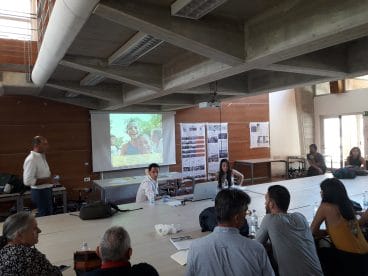
Aug 30, 2017 | Focolare Worldwide, Senza categoria
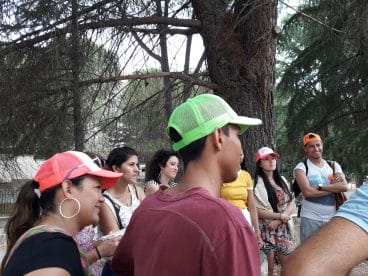 To inhabit a place in just two weeks, a place that is geographically and culturally far away from your home. This was the challenge of Habitandando: to build new bridges between, and on the other hand, a young and contrasted people, whose richness and inequalities are reflected also in its territory – made of megalopolises and immense regions. However, how do you build a bridge between Italy and Colombia in just fifteen days? How can you get to inhabit a place, to become familiar with it as if it were your home? Travel as a method therefore: to get to know a place by experiencing it, using as a testing ground for generating new and challenging ideas. And even this year, the experiences were the most diverse: crossing Central Italy by car, to distinguish how landscapes change from the coast to the mountains; living at Piazza del Campo in Siena, to observe how a public space has been functioning perfectly for centuries; walking for many hours around the centre of Rome, to distinguish each epoch in the thousand layers composing the city; exploring Tor Bella Monaca, a neighbourhood in the Roman periphery where failed architecture projects add up to a fragile social condition.
To inhabit a place in just two weeks, a place that is geographically and culturally far away from your home. This was the challenge of Habitandando: to build new bridges between, and on the other hand, a young and contrasted people, whose richness and inequalities are reflected also in its territory – made of megalopolises and immense regions. However, how do you build a bridge between Italy and Colombia in just fifteen days? How can you get to inhabit a place, to become familiar with it as if it were your home? Travel as a method therefore: to get to know a place by experiencing it, using as a testing ground for generating new and challenging ideas. And even this year, the experiences were the most diverse: crossing Central Italy by car, to distinguish how landscapes change from the coast to the mountains; living at Piazza del Campo in Siena, to observe how a public space has been functioning perfectly for centuries; walking for many hours around the centre of Rome, to distinguish each epoch in the thousand layers composing the city; exploring Tor Bella Monaca, a neighbourhood in the Roman periphery where failed architecture projects add up to a fragile social condition.  The travel is the method and the territory is the classroom. Each stage of the travel was devoted to a specific issue: for example, the Tuscany countryside explains territory and landscape, the Amalfi Coast shows both the antique and the modern, the towns hit by earthquakes in Central Italy show the relationship between memory and catastrophe. Having the territory as classroom allows first-hand observation of each issue, but is it’s not simply a way of going beyond the simplistic explanations by tourist guides and school textbooks. Rather, it is an occasion to incrementally build by yourself the knowledge on a given place. In fact, the participants were asked to focus on each place that they visited by writing pieces for different audiences, taking photographs with different communicative aims, developing their own explanations on specific settings and phenomena. Day by day, the first ingenuous reactions leave space to deeper reasonings. Maybe Tor Bella Monaca, the neighbourhood in the Roman periphery, provides the most interesting example: the initial skepticism (“Is this a poor and degraded neighbourhood? If only all poor places in Colombia were like this!”) is replaced by all the new ideas that it can generate. The participants’ disorientated looks of the first days were gradually replaced by more relaxed ones, once a relationship was established with the visited places and also the challenges facing them. The tension between memory and innovation were the guiding thread behind this year’s initiative, and this emerged also from the comments made at the end of the travel. For a Colombian student, Italy carries with her centuries of history but does not know how to manage such heritage, does not understand how nowadays heritage can interact with the demands of the habitat. These reflections were developed in the last days of the travel, spent in Montefalcone Appennino, It was the beginning of a think-tank which can yield varying results, but which already demonstrates what can be achieved through a new way of studying the habitat, by going out of the classrooms into the territory, inhabiting it on the move so to speak: to inhabit a place is not just to know it, but also to start imagining it differently from what it is right now. Compiled by Dialogue in Architecture
The travel is the method and the territory is the classroom. Each stage of the travel was devoted to a specific issue: for example, the Tuscany countryside explains territory and landscape, the Amalfi Coast shows both the antique and the modern, the towns hit by earthquakes in Central Italy show the relationship between memory and catastrophe. Having the territory as classroom allows first-hand observation of each issue, but is it’s not simply a way of going beyond the simplistic explanations by tourist guides and school textbooks. Rather, it is an occasion to incrementally build by yourself the knowledge on a given place. In fact, the participants were asked to focus on each place that they visited by writing pieces for different audiences, taking photographs with different communicative aims, developing their own explanations on specific settings and phenomena. Day by day, the first ingenuous reactions leave space to deeper reasonings. Maybe Tor Bella Monaca, the neighbourhood in the Roman periphery, provides the most interesting example: the initial skepticism (“Is this a poor and degraded neighbourhood? If only all poor places in Colombia were like this!”) is replaced by all the new ideas that it can generate. The participants’ disorientated looks of the first days were gradually replaced by more relaxed ones, once a relationship was established with the visited places and also the challenges facing them. The tension between memory and innovation were the guiding thread behind this year’s initiative, and this emerged also from the comments made at the end of the travel. For a Colombian student, Italy carries with her centuries of history but does not know how to manage such heritage, does not understand how nowadays heritage can interact with the demands of the habitat. These reflections were developed in the last days of the travel, spent in Montefalcone Appennino, It was the beginning of a think-tank which can yield varying results, but which already demonstrates what can be achieved through a new way of studying the habitat, by going out of the classrooms into the territory, inhabiting it on the move so to speak: to inhabit a place is not just to know it, but also to start imagining it differently from what it is right now. Compiled by Dialogue in Architecture

Aug 21, 2017 | Focolare Worldwide, Senza categoria
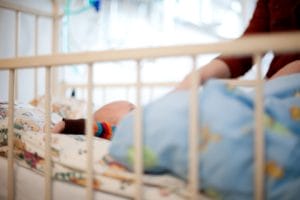 Eugene: My name is Eugene, and this is my wife Ann. We have been married for almost nine years, and have two children; Erin is seven and Anica is almost five. We come from the Philippines and we are here in Italy for a year, to make an experience in the school of families in Loppiano. I am an engineer by profession, and before coming here, I was working in the supply chain department in a power generation company. Ann: I have a degree in Information Technology. When we got married, I was then working in the IT industry. I had what I could say was a successful and flourishing career, and I was going up the corporate ladder. But it was a job that demanded much from me; at a certain point, I felt that to love Eugene and to make our desire of starting a family a reality, I had to put my family above my career. We talked about it together. Around that time, the global financial meltdown was being felt. We had doubts about being able to raise a family with only one income. It was a big risk. But we felt strongly that it was what God was asking from us, and we said our yes, trusting that God would always take care of us. I left my 10-year IT career and became a housewife, and Eugene became the sole provider for our family. Soon after, we found out that we were going to have our first baby and we were very excited. Erin was born. It was a joyful an exciting moment for us. But our joy was short-lived. Two weeks later, on December 6, we had difficulty feeding her. We brought her to the hospital, and the doctor told us that she had sepsis and meningitis, which was potentially fatal. December 7 was a special day for us. We started the day renewing our ‘yes’ to God’s will, believing that everything was part of His great love for our family. Very early that morning, the doctor called to inform us that the infection was apparently at an advanced stage and that Erin was in a very critical condition. That afternoon, we had Erin’s emergency baptism at the neonatal ICU.
Eugene: My name is Eugene, and this is my wife Ann. We have been married for almost nine years, and have two children; Erin is seven and Anica is almost five. We come from the Philippines and we are here in Italy for a year, to make an experience in the school of families in Loppiano. I am an engineer by profession, and before coming here, I was working in the supply chain department in a power generation company. Ann: I have a degree in Information Technology. When we got married, I was then working in the IT industry. I had what I could say was a successful and flourishing career, and I was going up the corporate ladder. But it was a job that demanded much from me; at a certain point, I felt that to love Eugene and to make our desire of starting a family a reality, I had to put my family above my career. We talked about it together. Around that time, the global financial meltdown was being felt. We had doubts about being able to raise a family with only one income. It was a big risk. But we felt strongly that it was what God was asking from us, and we said our yes, trusting that God would always take care of us. I left my 10-year IT career and became a housewife, and Eugene became the sole provider for our family. Soon after, we found out that we were going to have our first baby and we were very excited. Erin was born. It was a joyful an exciting moment for us. But our joy was short-lived. Two weeks later, on December 6, we had difficulty feeding her. We brought her to the hospital, and the doctor told us that she had sepsis and meningitis, which was potentially fatal. December 7 was a special day for us. We started the day renewing our ‘yes’ to God’s will, believing that everything was part of His great love for our family. Very early that morning, the doctor called to inform us that the infection was apparently at an advanced stage and that Erin was in a very critical condition. That afternoon, we had Erin’s emergency baptism at the neonatal ICU.  Eugene: The next day, Erin’s pulse started to drop. She was pale and weak, and her eyes were not responding to movement and light. At once, the doctor advised us to transfer her to a better-equipped hospital, which, naturally, was also more expensive. At first, I was worried because we could not afford the rates of that hospital. But Ann helped me make a leap of faith, and we agreed to do everything for Erin and worry about the expenses later. That morning, I couldn’t accept what was happening to our family. I asked God, “WHY?” but later, entrusting everything to Him, I gave Him my ‘yes.’ In the ambulance on the way to the new hospital, I was asked to stimulate Erin by touching her and singing her favorite lullaby because her pulse was dropping. It was hard to understand why our young family had to go through all this. But we continued to believe that there was a reason for everything, even if we could not understand it at that moment. Once again, Ann and I said our ‘yes’ to His will. Arriving at the emergency room, we watched as Erin was pierced with needles, connected to tubes and surrounded by machines. We watched her go into a seizure. We could not help but cry, seeing everything that was being done to her and realizing the gravity of her illness. I was at a loss and couldn’t understand why our baby had to go through all those painful medical procedures. That day was December 8, the feast of Mary’s Immaculate Conception. We went to the hospital chapel and entrusted Erin to our Lady. Ann: The doctors told us right away that Erin’s condition was very critical, that the infection seemed to have already reached her brain and that she had meningitis. They also told us that upfront that in cases as grave as this, they had only seen two outcomes in the past—either the patient did not live, or the patient survived but with a handicap. They assured us that they would do everything they could, but that we could only hope and pray. Various tests were run on her the entire day. Again, Erin had to undergo the ordeal of being pierced many times with needles while tubes and machines were connected to her arms and feet. Transfusions were ordered for platelets, fresh frozen plasma and red blood cells. She resembled a small Jesus being crucified, suffering and helpless. It was hard to see her go through this, but we also felt how special she was to Jesus, who had chosen her, at such a tender age, to be an innocent victim like Him on the cross. There was really nothing we could do but be there for her, staying “at the foot of her cross” as Mary had done when Jesus was on the cross. Eugene: While Erin was going through physical pain, Ann and I underwent a great deal of emotional pain. Many times, Ann and I would look at each other, assuring one another of our love and unity in this suffering. Though we couldn’t understand why we had to go through this, we continued to believe that it was part of God’s great design for our baby and our family. Absurd as it was, we still believed that this suffering was the immense love of God for us. That night, Ann and I asked ourselves if we were ready for anything: for the possibility of raising a handicapped child, even for the possibility that she would not make it at all, and we would lose her. I asked God, “Are You asking me to give You even my only daughter?” Ann remembered Abraham, who continued to trust, even when he was asked to sacrifice Isaac. She also remembered Job, who remained faithful even when he had lost everything, peacefully saying, “The Lord gives, the Lord takes away.” It was not easy to accept these harsh possibilities, but together, we accepted His will, realizing in that moment that Erin was not ours; she belonged to God. Ann: We prepared ourselves for the worst. But as days passed, we found each day giving us more and more reasons to hope. Erin responded remarkably to the treatment that was given to her. Her color returned, and her skin quality improved. Her eyes started to respond again. She became more mobile. Her cranial ultrasound showed that her brain was normal despite the gravity of the infection. All other tests done on her showed normal results, without a trace of the infection. Soon, the doctors and the nurses were calling her “a miracle baby.” Day after day, she became better and stronger. We watched our little woman bravely fight to live, and as we went through the experience with her, we re-learned important things in life which we might have started to take for granted. In a way, she was teaching us to “BE” more rather than to HAVE or DO more. She was teaching us what life was all about. Eugene: It was Christmas time, and in the midst of the many uncertainties, I was reminded of what Chiara Lubich affirmed one Christmas–that God alone is the source of joy and complete happiness. I also read the Pope’s message–that Christmas is a reminder of that little family of Nazareth, a seemingly unfortunate family that had to go through a lot of difficulties when Jesus was born. As we lived the experience with Erin, it was like a real-life meditation, a constant chance to meet Jesus and choose Him again and again, sometimes on the cross, sometimes in the resurrection. We were not always strong. But what sustained us was the presence of Jesus in our midst, with the Focolare community, and also the support of our family and friends. We felt God’s concrete love through the many people who came forward to help us–practically, financially, emotionally, spiritually–and through countless others who prayed for Erin and for us. Ann: Erin stayed in the hospital for 23 days. We had many celebrations in the hospital: my birthday, Erin’s first month, and our first Christmas as a family of three. But if there was anything worth celebrating and being grateful for, it was the gift of a new life for Erin. We went home on December 29, just in time for the New Year. During her first year of life, we continued to go to different doctors for follow-up check-ups, with consistently normal results. Just before she turned one-year old, she passed her neurological evaluation with flying colors, exceeding her neurologist’s expectations. Now, Erin is seven years old, living life spiritedly with our second daughter Anica who is almost five years old. We are here in Italy for one year to make an experience in the school for families in Loppiano. Like most parents, we also have our concerns, challenges and worries about our children. But we have already entrusted them and their future to God to whom they belong in the first place. We realize that as parents, we are only stewards with a role to accompany these children as they grow up, helping them to correspond to God’s beautiful plan of love for their lives.
Eugene: The next day, Erin’s pulse started to drop. She was pale and weak, and her eyes were not responding to movement and light. At once, the doctor advised us to transfer her to a better-equipped hospital, which, naturally, was also more expensive. At first, I was worried because we could not afford the rates of that hospital. But Ann helped me make a leap of faith, and we agreed to do everything for Erin and worry about the expenses later. That morning, I couldn’t accept what was happening to our family. I asked God, “WHY?” but later, entrusting everything to Him, I gave Him my ‘yes.’ In the ambulance on the way to the new hospital, I was asked to stimulate Erin by touching her and singing her favorite lullaby because her pulse was dropping. It was hard to understand why our young family had to go through all this. But we continued to believe that there was a reason for everything, even if we could not understand it at that moment. Once again, Ann and I said our ‘yes’ to His will. Arriving at the emergency room, we watched as Erin was pierced with needles, connected to tubes and surrounded by machines. We watched her go into a seizure. We could not help but cry, seeing everything that was being done to her and realizing the gravity of her illness. I was at a loss and couldn’t understand why our baby had to go through all those painful medical procedures. That day was December 8, the feast of Mary’s Immaculate Conception. We went to the hospital chapel and entrusted Erin to our Lady. Ann: The doctors told us right away that Erin’s condition was very critical, that the infection seemed to have already reached her brain and that she had meningitis. They also told us that upfront that in cases as grave as this, they had only seen two outcomes in the past—either the patient did not live, or the patient survived but with a handicap. They assured us that they would do everything they could, but that we could only hope and pray. Various tests were run on her the entire day. Again, Erin had to undergo the ordeal of being pierced many times with needles while tubes and machines were connected to her arms and feet. Transfusions were ordered for platelets, fresh frozen plasma and red blood cells. She resembled a small Jesus being crucified, suffering and helpless. It was hard to see her go through this, but we also felt how special she was to Jesus, who had chosen her, at such a tender age, to be an innocent victim like Him on the cross. There was really nothing we could do but be there for her, staying “at the foot of her cross” as Mary had done when Jesus was on the cross. Eugene: While Erin was going through physical pain, Ann and I underwent a great deal of emotional pain. Many times, Ann and I would look at each other, assuring one another of our love and unity in this suffering. Though we couldn’t understand why we had to go through this, we continued to believe that it was part of God’s great design for our baby and our family. Absurd as it was, we still believed that this suffering was the immense love of God for us. That night, Ann and I asked ourselves if we were ready for anything: for the possibility of raising a handicapped child, even for the possibility that she would not make it at all, and we would lose her. I asked God, “Are You asking me to give You even my only daughter?” Ann remembered Abraham, who continued to trust, even when he was asked to sacrifice Isaac. She also remembered Job, who remained faithful even when he had lost everything, peacefully saying, “The Lord gives, the Lord takes away.” It was not easy to accept these harsh possibilities, but together, we accepted His will, realizing in that moment that Erin was not ours; she belonged to God. Ann: We prepared ourselves for the worst. But as days passed, we found each day giving us more and more reasons to hope. Erin responded remarkably to the treatment that was given to her. Her color returned, and her skin quality improved. Her eyes started to respond again. She became more mobile. Her cranial ultrasound showed that her brain was normal despite the gravity of the infection. All other tests done on her showed normal results, without a trace of the infection. Soon, the doctors and the nurses were calling her “a miracle baby.” Day after day, she became better and stronger. We watched our little woman bravely fight to live, and as we went through the experience with her, we re-learned important things in life which we might have started to take for granted. In a way, she was teaching us to “BE” more rather than to HAVE or DO more. She was teaching us what life was all about. Eugene: It was Christmas time, and in the midst of the many uncertainties, I was reminded of what Chiara Lubich affirmed one Christmas–that God alone is the source of joy and complete happiness. I also read the Pope’s message–that Christmas is a reminder of that little family of Nazareth, a seemingly unfortunate family that had to go through a lot of difficulties when Jesus was born. As we lived the experience with Erin, it was like a real-life meditation, a constant chance to meet Jesus and choose Him again and again, sometimes on the cross, sometimes in the resurrection. We were not always strong. But what sustained us was the presence of Jesus in our midst, with the Focolare community, and also the support of our family and friends. We felt God’s concrete love through the many people who came forward to help us–practically, financially, emotionally, spiritually–and through countless others who prayed for Erin and for us. Ann: Erin stayed in the hospital for 23 days. We had many celebrations in the hospital: my birthday, Erin’s first month, and our first Christmas as a family of three. But if there was anything worth celebrating and being grateful for, it was the gift of a new life for Erin. We went home on December 29, just in time for the New Year. During her first year of life, we continued to go to different doctors for follow-up check-ups, with consistently normal results. Just before she turned one-year old, she passed her neurological evaluation with flying colors, exceeding her neurologist’s expectations. Now, Erin is seven years old, living life spiritedly with our second daughter Anica who is almost five years old. We are here in Italy for one year to make an experience in the school for families in Loppiano. Like most parents, we also have our concerns, challenges and worries about our children. But we have already entrusted them and their future to God to whom they belong in the first place. We realize that as parents, we are only stewards with a role to accompany these children as they grow up, helping them to correspond to God’s beautiful plan of love for their lives.



 A summer school in the Primiero Valleys (Italy) is not a novelty. Some had taken place in the past years, thanks to the initiative of the
A summer school in the Primiero Valleys (Italy) is not a novelty. Some had taken place in the past years, thanks to the initiative of the  Besides a profound experience with the Benedictine community of the monastery of Ampleforth, the Shomalis had deepened their knowledge of the spirituality of communion and had also met other Christians and Muslims, on the occasion of international meetings held in Rome and in
Besides a profound experience with the Benedictine community of the monastery of Ampleforth, the Shomalis had deepened their knowledge of the spirituality of communion and had also met other Christians and Muslims, on the occasion of international meetings held in Rome and in 




 Eugene: My name is Eugene, and this is my wife Ann. We have been married for almost nine years, and have two children; Erin is seven and Anica is almost five. We come from the Philippines and we are here in Italy for a year, to make an experience in the school of families in Loppiano. I am an engineer by profession, and before coming here, I was working in the supply chain department in a power generation company. Ann: I have a degree in Information Technology. When we got married, I was then working in the IT industry. I had what I could say was a successful and flourishing career, and I was going up the corporate ladder. But it was a job that demanded much from me; at a certain point, I felt that to love Eugene and to make our desire of starting a family a reality, I had to put my family above my career. We talked about it together. Around that time, the global financial meltdown was being felt. We had doubts about being able to raise a family with only one income. It was a big risk. But we felt strongly that it was what God was asking from us, and we said our yes, trusting that God would always take care of us. I left my 10-year IT career and became a housewife, and Eugene became the sole provider for our family. Soon after, we found out that we were going to have our first baby and we were very excited. Erin was born. It was a joyful an exciting moment for us. But our joy was short-lived. Two weeks later, on December 6, we had difficulty feeding her. We brought her to the hospital, and the doctor told us that she had sepsis a
Eugene: My name is Eugene, and this is my wife Ann. We have been married for almost nine years, and have two children; Erin is seven and Anica is almost five. We come from the Philippines and we are here in Italy for a year, to make an experience in the school of families in Loppiano. I am an engineer by profession, and before coming here, I was working in the supply chain department in a power generation company. Ann: I have a degree in Information Technology. When we got married, I was then working in the IT industry. I had what I could say was a successful and flourishing career, and I was going up the corporate ladder. But it was a job that demanded much from me; at a certain point, I felt that to love Eugene and to make our desire of starting a family a reality, I had to put my family above my career. We talked about it together. Around that time, the global financial meltdown was being felt. We had doubts about being able to raise a family with only one income. It was a big risk. But we felt strongly that it was what God was asking from us, and we said our yes, trusting that God would always take care of us. I left my 10-year IT career and became a housewife, and Eugene became the sole provider for our family. Soon after, we found out that we were going to have our first baby and we were very excited. Erin was born. It was a joyful an exciting moment for us. But our joy was short-lived. Two weeks later, on December 6, we had difficulty feeding her. We brought her to the hospital, and the doctor told us that she had sepsis a